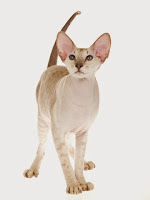While the Cavalier King Charles Spaniel is a relatively new breed, recreated less than a century ago, his prototype is the toy spaniel that has existed for centuries as a companion to royalty and nobility.
Cavaliers are descended from the same toy spaniels depicted in many 16th, 17th, and 18th century paintings by famous artists such as Van Dyck and Gainsborough. The spaniels in those paintings had flat heads, high-set ears, and longish noses.
These little spaniels were great favorites of royal and noble families in England. Mary, Queen of Scots had a toy spaniel who accompanied her as she walked to her beheading, and her grandson, Charles I, and great-grandson, Charles II — who gave their name to the breed — loved the little dogs as well. It's said that King Charles II, who reigned from 1660 to 1685, never went anywhere without at least two or three of these little spaniels. He even decreed that the spaniels should be allowed in any public place, including the Houses of Parliament. It's claimed that the decree is still in effect today in England, although no one has tested it recently to see if it's true.
After Charles II's death, the King Charles Spaniels' popularity waned, and Pugs and other short-faced breeds became the new royal favorites. The King Charles Spaniels were bred with these dogs and eventually developed many of their features, such as the shorter nose and the domed head.
There was one stronghold of the King Charles Spaniels that were of the type that King Charles himself had so loved — and that was at Blenheim Palace, the country estate of the Dukes of Marlborough. Here, a strain of red and white Toy Spaniels continued to be bred, which is why Cavalier King Charles Spaniels with this coloration are called Blenheim today.
Since there was no standard for the breed and no dog shows yet, the type and size of the toy spaniels bred by the Dukes of Marlborough varied. In the mid-19th century, however, English breeders started holding dog shows and trying to refine different dog breeds. By that time, the toy spaniel was accepted as having a flat face, undershot jaw, domed skull and large, round, front-facing eyes. The King Charles Spaniels depicted in paintings from earlier centuries were almost extinct.
In the 1920s, an American named Roswell Eldridge started searching in England for toy spaniels that resembled those in the old paintings. He searched for more than five years, even taking his search to the Crufts Dog Show, where he persuaded the Kennel Club (England's equivalent to the American Kennel Club) to allow him to offer 25 pounds sterling — a huge sum at the time — for the best dog and best bitch of the type seen in King Charles II's reign. He offered this prize for five years.
In 1928, Miss Mostyn Walker presented a dog named Ann's Son for evaluation and was awarded the 25-pound prize. Roswell Eldridge didn't live to see the prize claimed, as he had died just one month before Crufts. Interest in the breed revived, and a breed club was formed. The name Cavalier King Charles Spaniel was chosen to differentiate the breed from the flat-faced King Charles Spaniel (known as the English Toy Spaniel in the United States).
The club held its first meeting on the second day of Crufts in 1928 and drew up a breed standard, a written description of how the breed should look. Ann's Son was presented as an example of the breed, and club members gathered up all of the copies of pictures of the old paintings that had little dogs of this type in them. One thing that all club members agreed upon from the start was that the Cavalier King Charles Spaniels would be kept as natural as possible and trimming and shaping of the dog for the show ring would be discouraged.
The Kennel Club was reluctant to recognize the new breed, but finally, in 1945, after years of work by the breeders, the Cavalier King Charles Spaniel was recognized as a separate breed.
In the 1940s, two male Cavaliers were imported into the U.S. from England — Robrull of Veren and Bertie of Rookerynook. It wasn't until 1952, however, that Cavaliers had their true beginnings in the U.S. In that year, Mrs. (Sally) Lyons Brown of Kentucky was given a black and tan bitch puppy named Psyche of Eyeworth by her English friend, Lady Mary Forwood. She fell in love with the breed and imported more.
When she found that she couldn't register her dogs with the American Kennel Club, she started contacting people in the U.S. that had Cavaliers. At that time, there were fewer than a dozen. In 1954, she founded the Cavalier King Charles Spaniel Club, USA (CKCSC, USA), the official breed club and only registering body for Cavaliers in the United States for more than fifty years.
During these years, the members of the CKCSC, USA decided against pushing for full recognition of the breed, feeling that the club's strict code of ethics prevented the breed from being commercially bred. They feared that too much recognition of the breed would lead to it becoming too popular and therefore too attractive for breeders who wouldn't maintain the standards they had established. Mostly, they kept the AKC Miscellaneous status so that members who wanted to show their dogs in obedience could do so.





















